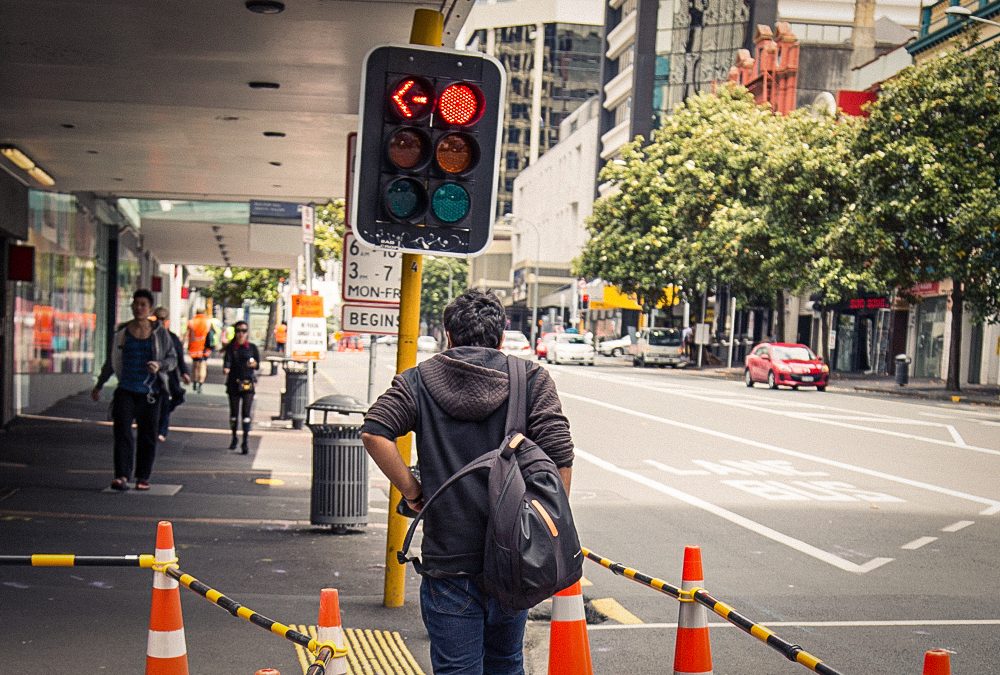I have worked on a number of sites in Auckland where altering permanent traffic signals are required for road works. On all of these projects altering the intersection becomes complicated, confusing and delays become inevitable as no single person has enough knowledge or understanding of what needs to be organised to get the works started. The real issue lies in the initial planning stages, as the intricacies of traffic signal design, operation and management is often overlooked.
My background gives me a unique perspective – I’ve worked as a traffic engineer and traffic management planner, I’ve had experience in civil construction management, and I’ve been in charge of installing and maintaining traffic signals for both a traffic signals contractor and for a tier one contractor. This goes without saying that I’ve also handled Altering Permanent Traffic Signals. As with most construction activities, to achieve the best results, the planning of traffic signal alterations must be completed at the early stages of the project as the traffic management plan for the overall project can and will dictate the workings of the intersection. If you neglect to think about the intersection until the later stages of the project, then you may be forced to work outside of your original construction plan due new constraints being added.
Below is a list of the people/organisations who need to be around the table to make the decisions to get the project moving as quickly and as efficiently as possible:
- ATOC – The entire Auckland region traffic signals assets are managed by ATOC. They will give the necessary approval throughout the life of the project for any temporary alteration (as well as the any sign offs for any permanent changes)
- Main Civil Contractor – they are ultimately responsible for the entire operation and maintenance of the intersection once the intersection has been altered, including snags, faults and any call-out due to asset damage
- Traffic Management Planner – Required to work out what type of long term closure can be installed, working areas, available space, pedestrian management etc for the different stages
- Traffic Signals Contractor (or Traffic signals specialist if traffic signals contractor has not been selected) – they will provide insight of what can and cannot be done when altering the intersection.
- Auckland Transport Service Disruptions – required to give you approval of what they will accept in terms of delay experienced by Public Transport, Bus-lane or Bus stop treatment etc.
- Auckland Transport CAR team – on larger projects they will give advice on the different options and may get different teams with AT to help assess the TMP before they give final approval. They will rely on approvals from ATOC and the service disruptions teams.
Due to the many inputs and differing viewpoints, expect the approval process and the attaining of the various documents and plans to take time. It is common that not enough time is given to this process, so delays will naturally occur. Further delay (and frustration) is caused once stamp approval is attained as now you need to complete the plethora of unforeseen civils works (ducting, temp footpaths, pavements etc), electrical works (cabling, traffic loops, pole fit-out etc.), and line marking works (new limit lines, new intersection alignment ). If the changes are so significant then an additional month or two of delay can be expected as a new software needs to be written, tested and then installed.
The key to any successful temporary altering permanent traffic signals in an intersection is communication. Communication helps everyone understand what construction work needs to be done, what responsibilities each party has and what the requirements are to ensure road users are safe when using the altered intersection.
For the road user, every aspect of the site – including the line-marking, pole position, pedestrian walkways, above ground ducting, and surface condition needs to talk to them, enabling them to traverse an existing intersection safety without incident. Therefore it is paramount that they are considered when altering permanent traffic signals in a layout, even more-so for a temporary layout change as we cannot provide the same level of detail and infrastructure the road user is normally used to. Failure to consider all of the aspects can lead to a myriad of problems like traffic delay, driver confusion and frustration. These problems can lead to poor decision making and driver confusion which can lead to different combinations of vehicle, pedestrian and cyclist collisions.
